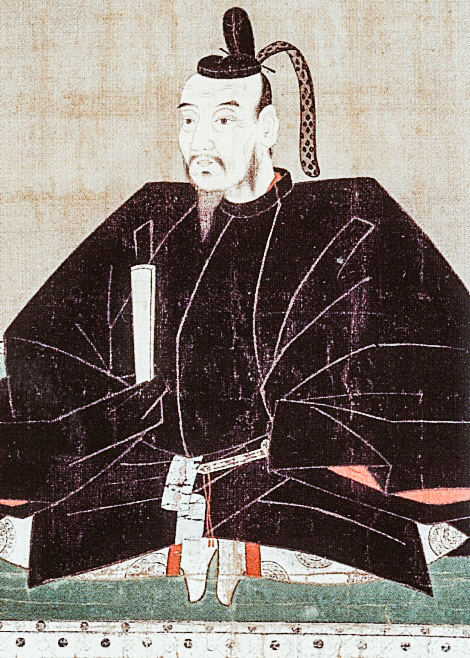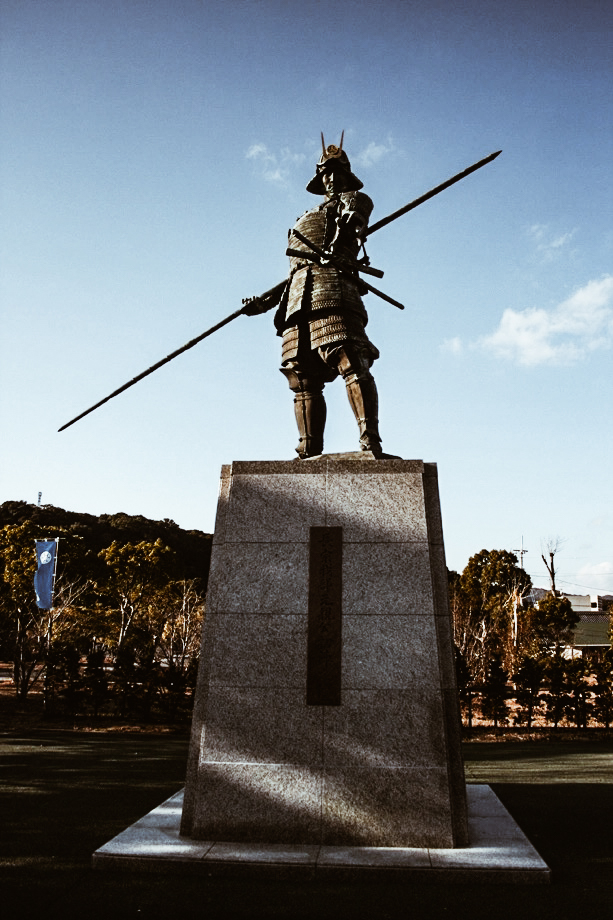Chōsokabe Motochika (1538 – 11 July 1599) was a Japanese daimyō of the Sengoku period and was born in Okō Castle in the Nagaoka district of Tosa province. The eldest son of Chōsokabe Kunichika, Chōsokabe Motochika was such a sweet boy that his father was worried about his nature, and it seems he was nicknamed Himewako, “Little Princess”, by his vassals.
Chōsokabe Motochika, also known as Himewako
Author: SaiKaiAngel

photo credits: wikipedia.org
Despite these concerns, Chōsokabe Motochika proved to be a skilled and brave warrior in his first battle, defeating the Motoyama clan in 1560 at the Battle of Tonomoto. After defeating the Motoyama and forming alliances with local families, Chōsokabe Motochika was able to build his power base on the Kōchi Plain. While remaining loyal to the Ichijō, Motochika with a force of 7000 men marched on the Aki clan, rivals of the Chōsokabe, defeating them in 1569 during the Battle of Yanagare. At that point Chōsokabe Motochika could concentrate on the Ichijō.
During the rule of the Hata district of Tosa, Ichijō Kanesada was a very unpopular leader and because of this, Motochika wasted no time in marching on the Ichijō headquarters in Nakamura and in 1573 Kanesada fled. At that point, the Ōtomo clan provided Kanesada with a fleet and with that he returned, leading an expedition that the Chōsokabe defeated at the Battle of Shimantogawa. At this point Kanesada submitted to the Chōsokabe, who probably had him assassinated in 1585.
Chōsokabe Motochika became the sole ruler of Tosa, and one of the problems the Chōsokabe faced was their own territory. Because of his poverty, he was unable to pay his generals, so he began to look to neighbouring provinces.
The unification of Shikoku
After the conquest of Tosa, Chōsokabe Motochika prepared for an invasion of the province of Iyo, against the lord of that province Kōno Michinao, a daimyō who had been driven from his domain by the Utsunomiya clan, helped only by the Mōri clan. But at this time the Mōri clan was at war with Oda Nobunaga, so they were unable to help Michinao, however the campaign in the Iyo province was not easy.
In 1579 a Chōsokabe army of 7000 men, led by Hisatake Chikanobu, attacked Okamoto Castle, held by Doi Kiyoyoshi in southern Iyo. During this siege, Chikanobu was killed and his army defeated. Motochika returned the following year with some 30,000 men to Iyo and forced Michinao to flee to Bungo province. With the Mōri and Ōtomo engaged on other fronts, Motochika was free to continue his conquest of the island and in 1582 was able to continue his raids on the Awa province to defeat the Sogo clan, giving him control of the island in 1583.

photo credits: mvbennett.wordpress.com
In 1579 Chōsokabe Motochika entered into communication with Nobunaga who seemed to have praised him, although in private he referred to him as a bat on a birdless island and planned to conquer Shikoku in the future, planning to give it to his son Nobutaka. This did not happen, due to Nobunaga’s death in 1582.
Involved in the ensuing dispute between Toyotomi Hideyoshi and Tokugawa Ieyasu the following year, he promised Tokugawa his support, although he made no direct moves to that end. Hideyoshi instead sent Sengoku Hidehisa to block any interference from Motochika. The Komaki campaign between Hideyoshi and Ieyasu ended in a peace treaty, and in 1584 Hideyoshi invaded Shikoku with 30,000 troops from the Môri clan and another 60,000 from Hashiba Hidenaga. Motochika managed to retain control of the Tosa province thanks to the terms decided by Hideyoshi.
Chōsokabe Motochika is remembered both for his 100-article Code of Chōsokabe and for his tenacity in founding a very strong castle-city from Oko to Otazaka and then to Urado. However, the problems caused by Morichika’s appointment as heir led to the clan’s undoing. After Nobuchika’s death in battle, Hideyoshi suggested that Motochika’s second son, Chikakazu, be appointed heir.
But when Motochika resigned, he made Morichika, his fourth son, his heir, because he felt Chikakazu was physically incapable of assuming leadership of the family. With this in mind, Chikakazu retired and died of illness in 1587. When Chōsokabe Motochika was called to Hideyoshi’s invasion of Kyūshū, he and Sengoku Hidehisa were called in.
Their mission was to raise the siege of the Ōtomi clan. Despite the wise advice of Chōsokabe Motochika, generals Ōtomo and Sengoku did not adopt a defensive position and attacked the forces of the Shimazu clan at the Battle of Hetsugigawa, defeating the allied troops, but at the same time Nobuchika, Motochika’s heir, died. At that point Toyotomi Hideyoshi praised Motochika’s thinking and offered him Ōsumi as compensation for his loss, but this was refused.
In 1590 Motochika led a naval contingent in the siege of Odawara and in 1592 commanded 3000 soldiers in the invasion of Korea. On his return from Korea he retired to Fushimi, became a monk and died on 11 July 1599.
Share this:
- Click to share on Facebook (Opens in new window)
- Click to share on Twitter (Opens in new window)
- Click to share on Tumblr (Opens in new window)
- Click to share on Pinterest (Opens in new window)
- Click to share on Telegram (Opens in new window)
- Click to share on WhatsApp (Opens in new window)
- Click to share on Reddit (Opens in new window)
- Click to print (Opens in new window)






